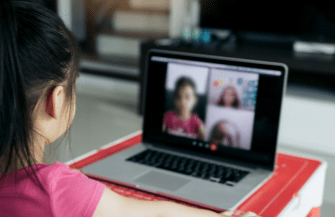 “It hurts my heart tremendously” to know that gaps in achievement will grow during the shutdown of school buildings, says Jennie Black, principal of Washington Elementary in Junction City, Kansas.
“It hurts my heart tremendously” to know that gaps in achievement will grow during the shutdown of school buildings, says Jennie Black, principal of Washington Elementary in Junction City, Kansas.
She is most worried about the students who were already struggling in school before buildings closed and aren’t logging into school lessons during this time. She and her teachers have already begun talking about how they will assess where students are and how to accelerate their learning and get them on their way. “They’re good learners, but they’ve missed learning.”
But one of the things she is learning during this time is that “There are some kids who thrive in this environment.” Not only that, but many teachers are enjoying creating new content and new ways of teaching without having to spend time and energy on classroom management.
She has already begun thinking about how much time is spent simply herding children from one place to another and from one activity to another. What would it look like, she is wondering, if we accepted that some children and some teachers won’t want to go back to the way schools were run before the pandemic. “How do you meet the needs for all of that?” She is puzzling through whether it is possible to continue some kind of remote learning for those students for whom that is appropriate.
“We would be wrong to believe that education won’t be transformed forever,” she says.
In the meantime, she and her leadership team are putting together a Plan A, a Plan B, and a Plan C for reopening in the hall with different plans depending on the progression of COVID-19. They range from “normal” operations with a lot of precautions in terms of checking temperatures and isolation rooms for suspected cases; staggered schedules with only some children in the building at any one time; and continuing full remote learning. Each plan comes with its dangers and downsides.
But she is heartened that despite the fact that many families struggle with remote learning, “Some of our families have risen beyond what I would have expected.”
For more about Jennie Black and the transformation she helped lead at Ware Elementary in Junction City, Kansas, see HOW It’s Being Done (Harvard Education Press, 2011).





 “It hurts my heart tremendously” to know that gaps in achievement will grow during the shutdown of school buildings, says Jennie Black, principal of Washington Elementary in Junction City, Kansas.
“It hurts my heart tremendously” to know that gaps in achievement will grow during the shutdown of school buildings, says Jennie Black, principal of Washington Elementary in Junction City, Kansas.